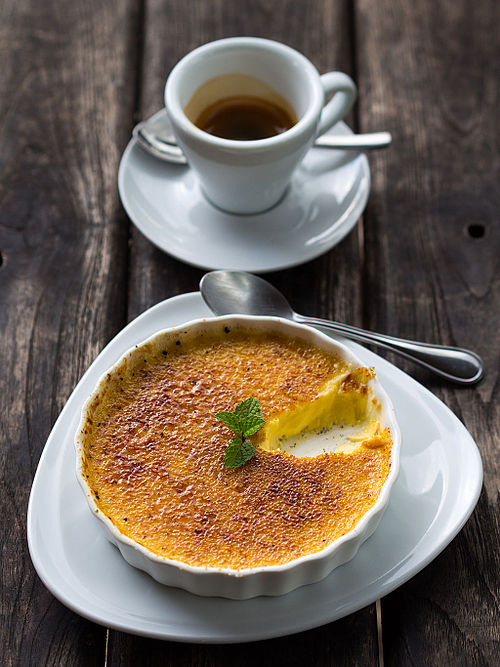Caramelization (or caramelisation) is a process of browning of sugar used extensively in cooking for the resulting butter-like flavor and brown color. The brown colors are produced by three groups of polymers: caramelans (C24H36O18), caramelens (C36H50O25), and caramelins (C125H188O80). As the process occurs, volatile chemicals such as diacetyl (known for its intense butter-like taste) are released, producing the characteristic caramel flavor. [1]
Contents
Like the Maillard reaction, caramelization is a type of non-enzymatic browning. Unlike the Maillard reaction, caramelization is pyrolytic, as opposed to being a reaction with amino acids.
When caramelization involves the disaccharide sucrose, it is broken down into the monosaccharides fructose and glucose. [2]


